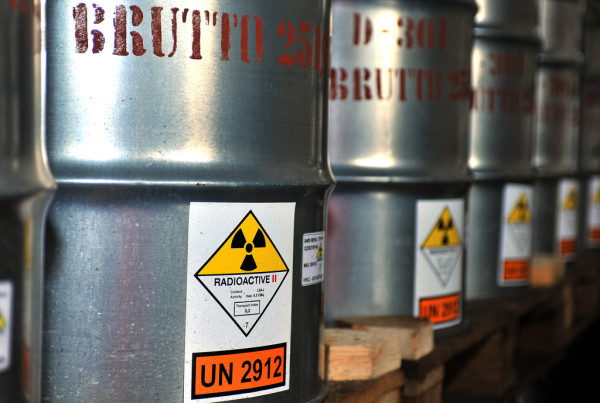A new report by the International Atomic Energy Agency (IAEA) published on 10 September 2014 found that demand for uranium, the raw material used to fuel nuclear power stations, will continue to rise, despite declining market prices since the Fukushima Daiichi Nuclear Power Plant accident in Japan in March 2011 and lower electricity demand as a result of the global economic crisis.
The Red Book, as the report is known, is a recognized global reference on uranium jointly prepared by the IAEA and the Nuclear Energy Agency of the Organisation for Economic Cooperation and Development (NEA/OECD).*
It found an increase in uranium supply, exploration and production. Some seven per cent more uranium resources have been identified since the last report was published in 2012, adding almost 10 years to the existing resource base.
Global Uranium Production Continued to Increase
Global uranium production continued to increase between 2010 and 2012, albeit at a lower rate than in the previous two-year period. The growth in the resource base is mainly due to a 23 per cent increase in uranium exploration and mine development, which totalled $1.92 billion in 2012.
On the demand side, projections vary from region to region. While the Fukushima Daiichi nuclear accident resulted in a change of policies in many developed countries, nuclear capacity projections, notably in East Asia and non-European Union states on the European continent, continue to grow.
The Red Book projects that world nuclear electricity generating capacity by 2035 is expected to increase between 7 per cent on the low and 82 per cent on the high side. This is in line with the IAEA’s most recent projections of between 8 and 88 per cent for the year 2030.
Who Produces Uranium?
More than 20 countries around the globe produce uranium, with Kazakhstan, Canada and Australia as the largest producers, accounting for approximately 63 per cent of world production. The reported growth in production is mainly driven by Kazakhstan, with smaller additions in Australia, Brazil, China, Malawi, Namibia, Niger, Ukraine and the United States.
The continued robust demand for the resource has led to future plans for mining operations in new countries including Botswana, Tanzania and Zambia. And to minimise the social and environmental impacts, efforts are being made to develop safe and well-regulated operations.
The new report provides analyses from 45 countries in order to address questions on global uranium exploration, resources, production and reactor-related requirements. It also offers updated information on uranium production centers and mine development plans, as well as projections of nuclear generating capacity and reactor-related requirements through 2035. (*Source: UN Release).
Read also:
UN Officials Call for Renewed Global Commitment to Ending Nuclear Tests
Do You Have the Courage to Ban Nuclear Weapons?
Why Is the Total Elimination of Nuclear Weapons So Urgent?
Hiroshima: The Myth of “Military Necessity”
Inhumane, Illegal, Immoral and Cruel: a Survivor Account of the Hiroshima Bombing
Anti-Nukes Move from Norway to Bahrain The NPT’s “Unacceptable and Continuous Failure”: Egypt Walks Out
Fed Up With Empty Promises, The Arab May Abandon Nuclear Non-Proliferation Treaty
Middle East Nuclear Free Bid Moves to Finland – Yet Another Lost Chance?
Nuclear Free Middle East “High Priority” Nuclear Free Middle East — Necessary Yet Impossible
Middle East — France’s Fuzzy Face on Nuclear Abolition
‘Strong UN Commitment’ to Nuclear-free Middle East Conference
Which Countries Have Nuclear Weapons and How Many?
Banks, Pension Funds, Insurance Companies in 30 Countries ‘Invest’ Your Money in Nuclear Arms
‘Humanity Could Not Survive a Nuclear War Using Even a Fraction of Existing Arsenals’
Another Lost Chance to Save Middle East from Mass Destruction
Watch The Sky–It May Rain Atomic Bombs
Nuclear Terrorism – Killing 100,000 People Not Very Difficult
Humanitarian Consequences of Nuclear Weapons — Are You Ready to Hit the Gas?
Ecocide, a Catastrophic Consequence of Nuclear Weapons
“Breaking the Nuclear Chain” Campaign
Pressure to Push the Nuclear Genie Back in the Bottle
Germany Resolved to Pave the Way to Nuclear Disarmament
India, Pakistan Engaged in World’s Most Active Nuclear Arms Race
World Nuclear Forces: ‘Fewer But Newer’ Weapons
Desert “Star Wars”, Respect Dignity of Life
Nuclear Dangers, The World Is “One Minute Closer to Midnight” U.S. Spending on Atomic Bombs Doubles UN Budget
Of Dr. Strangelove and the Risk of Using Atomic Bombs World Campain Against False ‘Nuclear Deterrence Doctrine’
The Story of Child Yami and the Atomic Bomb
Obama and How to Save a Quarter of a Trillion Dollars
You Choose: $105 Billion a Year for Health Care or Nuclear Weapons?
Will Israel Attack Iran … Really?
Top US Military Commander: ‘I Don’t Want to Be Complicit’ if Israel Attacks Iran
US Defense Secretary Warns of ‘Pearl Harbor’ Cyber Attack by Iran






